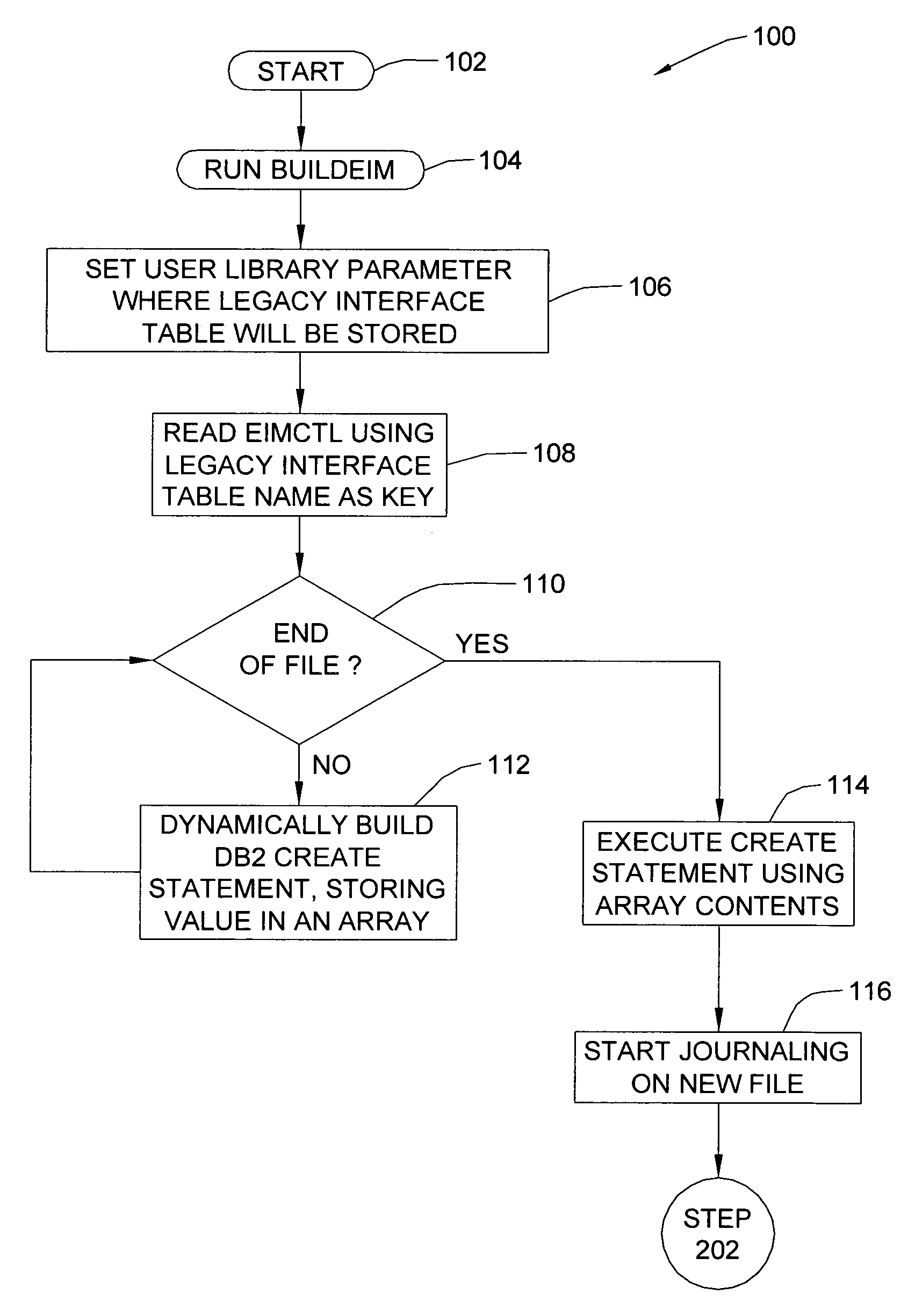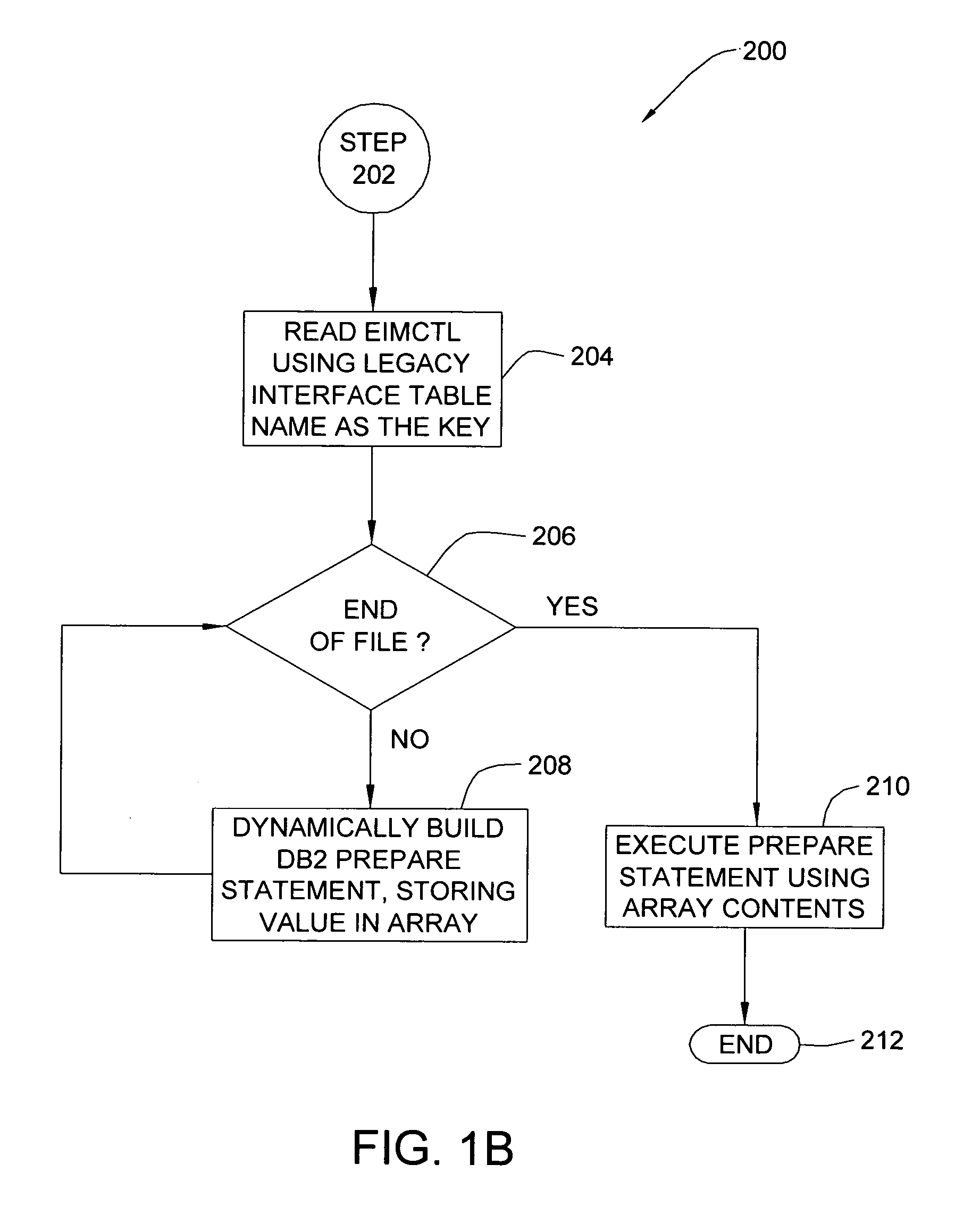[0003] In one aspect of the invention, there is provided a method for translating data to be migrated from a legacy database to a recipient database. The method comprises providing a legacy database having metadata describing one or more legacy data fields in the legacy database and creating a legacy value table in the legacy database that corresponds to a recipient value table in the recipient database. Further, the method comprises updating a translation table in the legacy database that defines one or more recipient data elements in the recipient database based upon the metadata of the legacy database, and translating legacy data elements in the legacy database to correspond to the one or more recipient data elements in the recipient database by utilizing the translation table. Further, the method comprises mapping the one or more legacy data fields in the legacy database to one or more recipient intermediary tables in the recipient database. Additionally, the method comprises populating a legacy interface table created in the legacy database with the legacy data elements that are translated and any remaining legacy data elements that are not translated and remotely extracting the data from the legacy interface table to the one or more recipient intermediary tables in the recipient database. Preferably, the providing step comprises providing a control table in the legacy database that has data descriptions for one or more recipient intermediary tables in the recipient database, updating the control table, and creating an empty legacy interface table in the legacy database by utilizing the control table that is updated. Preferably, the creating step comprises the creating a legacy value table step comprises updating the recipient value table in the recipient database, and populating the legacy value table in the legacy database by utilizing the recipient value table that is updated in the recipient database. Further, the updating a translation table step includes providing the translation table, providing a combination table in the legacy database that maps the one or more legacy data fields in the legacy database to corresponding recipient data fields in the legacy value table, and populating the translation table by utilizing the legacy value table and the combination table. Furthermore, the populating the translation table step using as a key field in the combination table, a recipient data field that corresponds to a legacy data field to read in the legacy value table a stored field value that corresponds to a stored field value in a stored field name in the legacy data field, creating a concatenated value by concatenating the stored field name in the legacy data field in the combination table with the stored field value read in the legacy value table, and utilizing the concatenated value to update the translation table with a stored display value in the legacy value table. Preferably, the metadata of the legacy database comprise a field name and a field value, and, preferably, the legacy data elements in the legacy database comprise the field value, and, preferably, the one or more recipient data elements in the recipient database comprise a display value. More preferably, the recipient database is a Siebel database.
[0004] In another aspect of the invention, there is provided a method for migrating data from a legacy database to a recipient database. The method comprises providing a legacy database having metadata describing one or more legacy data fields in the legacy database and creating a legacy value table in the legacy database that corresponds to a recipient value table in the recipient database. Further, the method comprises updating a translation table in the legacy database that defines one or more recipient data elements in the recipient database based upon the metadata of the legacy database, and translating legacy data elements in the legacy database to correspond to the one or more recipient data elements in the recipient database by utilizing the translation table. Additionally, the method comprises populating a legacy interface table created in the legacy database with the legacy data elements that are translated and any remaining legacy data elements that are not translated and remotely extracting the data from the legacy interface table in the legacy database to the one or more recipient intermediary tables in the recipient database. Preferably, the providing step comprises providing a control table in the legacy database that has data descriptions for the one or more recipient intermediary tables in the recipient database, updating the control table, and creating an empty legacy interface table in the legacy database by utilizing the control table that is updated. Preferably, the creating a legacy value table step comprises updating the recipient value table in the recipient database, and populating the legacy value table in the legacy database by utilizing the recipient value table that is updated in the recipient database. In a preferred embodiment, the updating a translation table step comprises providing the translation table, providing a combination table in the legacy database that maps the one or more legacy data fields in the legacy database to corresponding recipient data fields in the legacy value table, and populating the translation table by utilizing the legacy value table and the combination table. Preferably, the populating the translation table step comprises using as a key field in the combination table, a recipient data field that corresponds to a legacy data field to read in the legacy value table a stored field value that corresponds to a stored field value in a stored field name in the legacy data field, creating a concatenated value by concatenating the stored field name in the legacy data field in the combination table with the stored field value read in the legacy value table, and utilizing the concatenated value to update the translation table with a stored display value in the legacy value table. Preferably, the metadata of the legacy database comprise a field name and a f...
 Login to View More
Login to View More  Login to View More
Login to View More 


